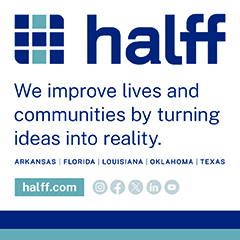Connecticut Gov. Ned Lamont is proposing more than $4.4 billion in new general obligation (GO) bonds over the next two years, including new strategic investments for housing, aging infrastructure, transportation and workforce development.
The new bonds and investments, presented to state legislators last week, are a vital aspect of the governor’s budget proposal for fiscal years 2026 and 2027. Seeking to streamline government processes and improve funding for localities, the new proposal will devote 69.8% of the GO capital budget to municipalities, private organizations and nonprofits.
“My budgets prioritized significant municipal aid investments because that funding is about more than ensuring our unique towns and cities are incredible places to live, but because that funding supports our children’s education and gives them the best opportunity at the starting line in life,” Gov. Lamont said. “In my next biennium proposal, we kept with those investments by proposing more special education funding, community economic development grants and school and local capital improvement projects.”
As part of the capital budget proposal, the state would authorize the issuance of new bonds to support new and existing initiatives, such as housing, environmental resilience, economic development, transportation infrastructure and state funding programs.
In the coming weeks, the General Assembly’s Appropriations Committee and Finance, Revenue and Bonding Committee will evaluate the governor’s budget proposal. The state’s final budget will need to be finalized and enacted prior to the end of the fiscal year on June 30.
If enacted, the budget seeks to address the state’s housing shortages by investing in new housing developments, programs and initiatives throughout the state.
The budget advocates for $400 million annually to support housing projects and projects, including constructing an estimated 7,500 housing units, bolstering the Housing Trust Fund and Flexible Housing funding and approving $58.6 million for supportive housing developments for individuals with substance abuse disorders.
Notably, the governor’s budget will authorize over $130 million to the Build for Connecticut program, which provides subordinate financing for developers to construct market rate multifamily homes.
The state’s resilience initiatives will be backed by over $1 billion to address energy and environmental justice needs across the state. The budget proposes dedicating a significant portion of this funding to the state’s Clean Water Fund and Drinking Water Fund to maintain wastewater infrastructure, treatment plants and additional resilience efforts.
The budget proposal increases funding for municipal services and education throughout the state, including new grants, endowments and expansions of existing programs.
Under the budget, the governor will emphasize shared services between municipalities to enhance regional cooperation and reduce costs associated with stormwater management, flood mitigation, municipal solid waste and recycling initiatives. This regional connectivity could lead to opportunities for public-private partnerships to improve water distribution and treatment systems.
Transportation infrastructure will be supported by approximately $1.55 billion in FY 2026 and $1.59 billion in FY 2027, under the proposal. Looking to address the ongoing needs of Connecticut’s transportation systems, the state will offer $100 million competitive grants for work on the Northeast Corridor, which is expected to spur $400 million in additional federal investments annually.
The budget will also match an estimated $3.1 billion in federal assistance for large scale transportation projects, such as the traffic signal removal initiative on Route 9 in Middletown, bridge replacements along the New Haven line and double tracking along the Hartford line.
The governor says this budget proposal reflects the state’s ongoing commitment to strengthening local services, enhancing educational opportunities for students and building local economies. For more information on the proposal, view the governor’s full budget on the state’s Office of Policy and Management website.
Photo by Taylor Hunt













